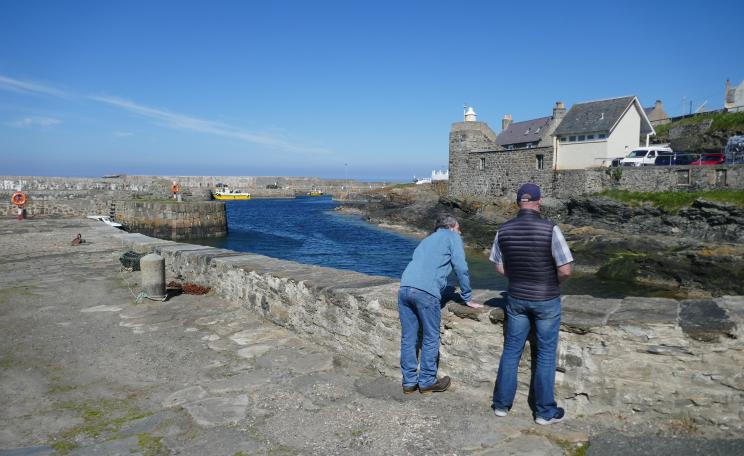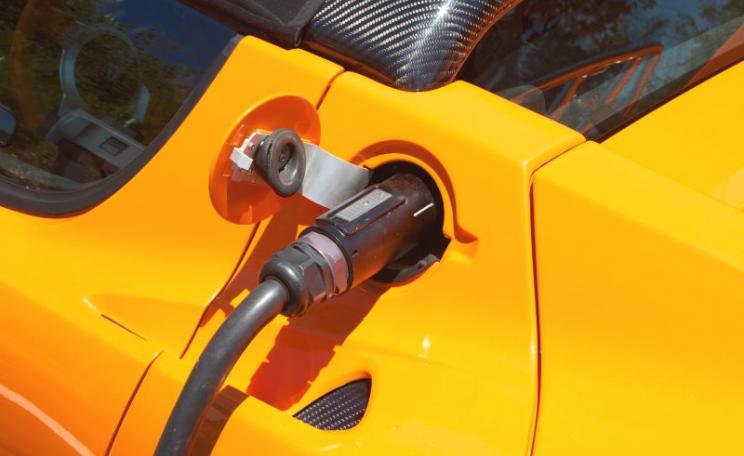Nightly enormous clouds of vile vapours ascend from the stacks and towers of BP and drift towards the defenceless dwellings of a sleeping population nearby.
Feet slipping on the soft sand, hands grabbing the marram grass, we make it to the top of the dunes. It’s early morning and the bay stretches before us.
Silver light on the calm waters. The silhouettes of the Sunday sleeping city of Swansea and Mumbles Head. The pale cliffs of north Devon several miles south across the Severn Sea and a coaster labouring against the tide up the channel towards Bristol.
The long sweep of sandy beach at Aberavon Prom is dotted with a few dog walkers and joggers. Beyond it on the horizon an outline of the steel works, steam drifting up from its towers and chimneys.
Chimney
At this distance, a couple of miles upwind, the plant is silent and gentle. Almost toy-like. Between us and it are the roofs of Sandfields, the western quarter of Port Talbot.
Little stirs in the streets between the two-storey houses. Only the occasional passing car or a pair of cyclists, their voices carrying in the Sunday quiet.
Nightly enormous clouds of vile vapours ascend from the stacks and towers of BP and drift towards the defenceless dwellings of a sleeping population nearby.
Behind the houses, behind the clouds of factory steam, are the mountains Mynydd Emrich and Mynydd Dinas.
Their soft forms, clothed in bright green grazing and dense woods, look down on the town and the industry camped out on the narrow strip of sand running between the foot of the hills and the sea.
We turn to look behind us, across Baglan Moor. In the distance is the solid cylinder of a gas-fired power station chimney and beyond, the bridge of the M4 motorway sailing high over the River Neath.
Effluent
We check the OS map, the chimney is a mile away. Between it and us is a dark plain. Here and there are rusting metal structures. Two yellow JCB diggers sit immobile in the distance.
Most of the land is covered in low scrub, rough grass and hunks of masonry. Immediately in front of us the perimeter barrier runs around the entire site.
There are seven miles of grey concrete posts, chain link fencing and rusty barbed wire. Nearby on a brick wall is the faded name of a band painted in white letters – New Order.
This is what we have come to see, the site of the former BP Baglan petrochemicals factory, but the scale of it, the immensity of this plain stretching into the distance, is overwhelming.
We have read that some parts of the soil of this area are contaminated with toxins to a depth of ten feet. The plant ran for 41 years, and at one point it was the largest petrochemical works in Europe.
It operated night and day. For perhaps 380,000 hours it spewed the effluent of plastics into the land, into the seas and into the skies.
* * *

Tea
During the building of the original plant there had been protests against the factory. On 25 April 1963 – five months before the official opening – the Daily Mail reported, ‘Soot turns whites black in Golden Grove’.
For the pollution from the new flare stack had ruined clothes on the washing lines of residents in Sandfields, especially in the streets around Golden Grove, and deposited grit across gardens, streets and roofs.
Forty women marched on the factory, carrying sacks of grit swept up from around their homes, to demand action.
As the history of Baglan published by BP noted: "Management met the group at the factory and invited the ladies to the canteen for a cup of tea."
Assurances were given by the company that the problem would not reoccur; this was accepted by the residents.
Vile vapours
This demonstration by these women of Sandfields was perhaps the first protest against the oil industry in the UK, a decade before the actions that took place on Canvey Island in Essex.
In the same month of April 1963 a residents’ association was set up in the village of Baglan on the northern edge of the plant, which pledged ‘To wage war against the local authority’ and demanded compensation for the impact of the works.
As the newly expanded factory came into production in the early 1970s there was again strong opposition among local residents. News of some of it reached national press and TV.
The Sunday Times printed the words of the Rev. A. R. Wintle, curate of Baglan’s St Catherine’s Church that overlooked the factory.
"It has become virtually impossible to open bedroom windows during the hours of darkness … Nightly … enormous clouds of vile vapours ascend from the stacks and towers of BP and drift towards the defenceless dwellings of a sleeping population nearby.
Cough
"The air is heavy with indescribable smells; the whole district reeks with the odours produced by the uncaring ingenuity of modern technological man."
On arriving in his new post as the Baglan works general manager, Ray Knowland had to go head-to-head with the Rev. Wintle on live radio.
Despite reassurances from the management, the chemical plant had a powerful impact on the immediate environment.
Lynne Rees, who attended Sandfields Comprehensive from 1969 to 1976, writes in her memoir that the school was "a cough and choke away from BP, and I remember the warning sirens to stay inside until an all-clear" was given.
Wages
She recalls that because of the pollution, "washing turning black or even disintegrating on the garden line". And, "I remember a monstrous open-mouthed effluent pipe that used to cut through the sand dunes from the works onto the high-tide line of the beach".
As with the resistance to the refineries being built on the River Thames, the protests at Baglan in the early 1970s tapped into the growth of the wider British environmental movement.
However, unlike at Canvey the resistance did not halt the construction of the works. Perhaps this was because of the strength of BP; unlike Occidental it was a ‘national institution’ and had powerful links with officials in Port Talbot, the county of Glamorgan and Westminster.
Or perhaps it was because the company already employed over 6,000 personnel directly and indirectly across south Wales, from Angle Bay to Barry, and consequently the wages it paid underpinned thousands of households.
Toxic
Or perhaps it was because at night the lights of the plant reflected in the waters of Swansea Bay, shimmering white like the skyscrapers of Manhattan, proclaiming themselves as the inevitable future of Wales, the future of Britain.
We look up from our coffees and through the window to survey the two miles of one of Wales’ finest bathing spots and wonder at what remains here.
Perhaps one of the motives for the building of the Afan Lido, opened by the Queen in 1965, was that it meant that residents of Port Talbot would not have to bathe in a toxic sea.
Today this sunny beach does not look like the blackened land at the site of the old factory, but it is implausible that 40 years of toxins have not left their mark here too.
These Authors
James Marriott is an author and environmental campaigner. Terry Macalister is an award-winning journalist and former energy editor of The Guardian.
This is an extract from the book Crude Britannia: How oil shaped a nation published by Pluto Press on May 20, 2021. The book follows the history and influence of oil on people, culture and the environment from the Second World War to the present day.







